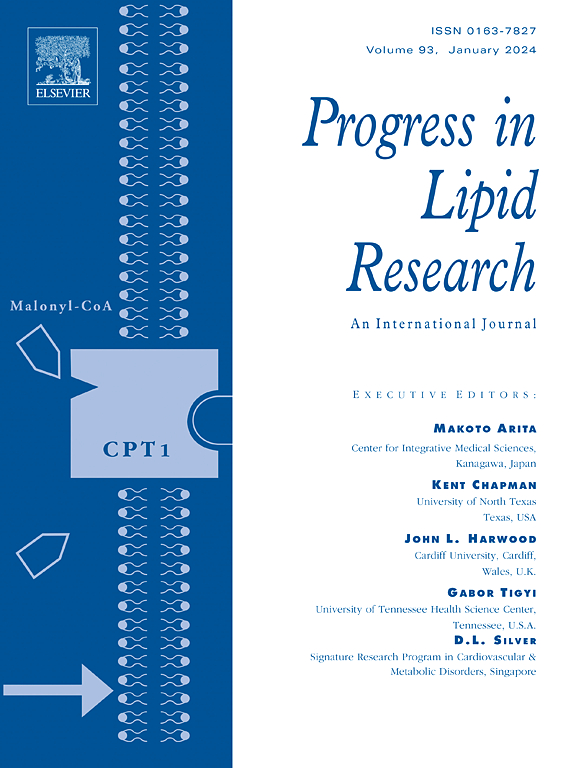神经退行性疾病中的Omega-3多不饱和脂肪酸:混合设计 = 混合结果。
IF 14.9
1区 医学
Q1 BIOCHEMISTRY & MOLECULAR BIOLOGY
引用次数: 0
摘要
流行病学研究一致表明,增加鱼类和长链omega-3多不饱和脂肪酸(PUFAs)的摄入量,如二十二碳六烯酸(DHA)和二十碳五烯酸(EPA),可以降低患神经退行性疾病的风险,特别是痴呆症和阿尔茨海默病。这些观察结果得到了临床前研究的支持,其中已经确定了一系列潜在的机制,例如增加神经发生,或通过产生生物活性脂质介质调节炎症和神经炎症。然而,临床试验的结果是不一致和混杂的,这可能是由于试验设计的相当大的异质性,但也缺乏对omega-3 PUFA研究特有的方法学并发症的认识。在这篇综述中,我们探讨了基于参与者选择和试验设计的omega-3 PUFA特定方法学考虑。参与者相关的方面包括基线认知状态、年龄、性别和基因型,而方法学方面包括安慰剂选择、DHA与EPA、omega-3 PUFA制剂的化学形式和质量,以及更广泛的营养相互作用。我们还建议如何在临床试验的设计和报告中考虑这些因素,以提高该领域研究的有效性和可重复性。本文章由计算机程序翻译,如有差异,请以英文原文为准。
Omega-3 polyunsaturated fatty acids in neurodegenerative disorders: Mixed designs = mixed results
Epidemiological studies consistently show an elevated intake of fish and long-chain omega-3 polyunsaturated fatty acids (PUFAs), such as docosahexaenoic acid (DHA) and eicosapentaenoic acid (EPA), reduces the risk of developing neurodegenerative diseases, particularly dementia and Alzheimer's disease. These observations are supported by preclinical research, where a range of potential mechanisms have been identified, such as increasing neurogenesis, or regulating inflammation and neuroinflammation via the production of bioactive lipid mediators. However, the results of clinical trials have been inconsistent and mixed, and this may be due to the considerable heterogeneity in trial designs, but also a lack of appreciation of methodological complications unique to omega-3 PUFA research. In this review, we explore omega-3 PUFA specific methodological considerations based around participant selection and trial design. Participant-related aspects include baseline cognitive status, age, sex and genotype, whereas methodological aspects include placebo selection, DHA vs. EPA, chemical form and quality of the omega-3 PUFA preparation, and wider nutrient interactions. We also suggest how consideration of these factors should be included in the design and reporting of clinical trials, with the aim of increasing the validity and reproducibility of research in the field.
求助全文
通过发布文献求助,成功后即可免费获取论文全文。
去求助
来源期刊

Progress in lipid research
生物-生化与分子生物学
CiteScore
24.50
自引率
2.20%
发文量
37
审稿时长
14.6 weeks
期刊介绍:
The significance of lipids as a fundamental category of biological compounds has been widely acknowledged. The utilization of our understanding in the fields of biochemistry, chemistry, and physiology of lipids has continued to grow in biotechnology, the fats and oils industry, and medicine. Moreover, new aspects such as lipid biophysics, particularly related to membranes and lipoproteins, as well as basic research and applications of liposomes, have emerged. To keep up with these advancements, there is a need for a journal that can evaluate recent progress in specific areas and provide a historical perspective on current research. Progress in Lipid Research serves this purpose.
 求助内容:
求助内容: 应助结果提醒方式:
应助结果提醒方式:


